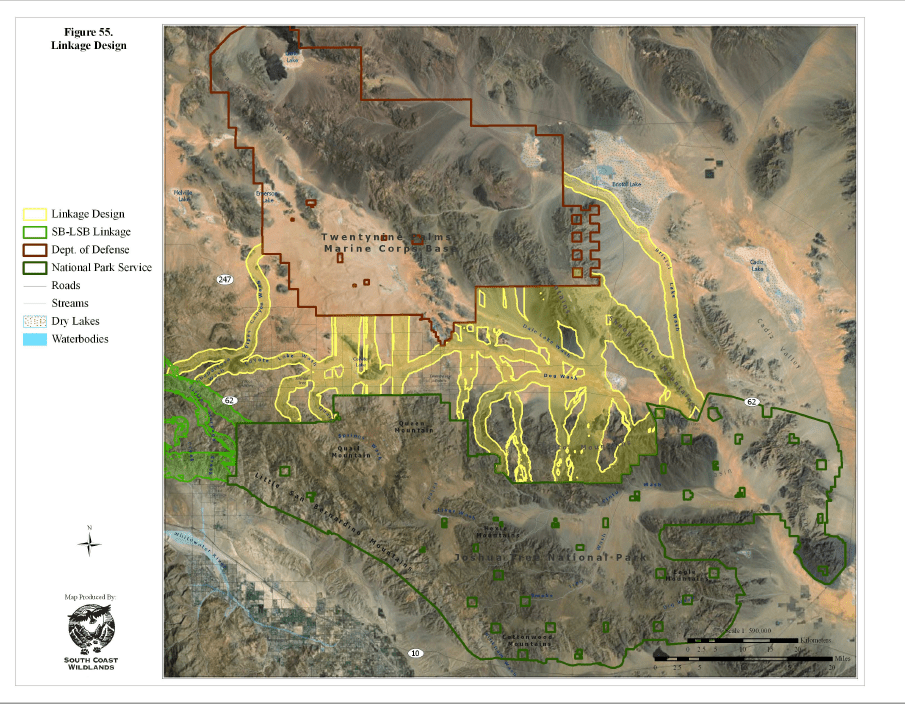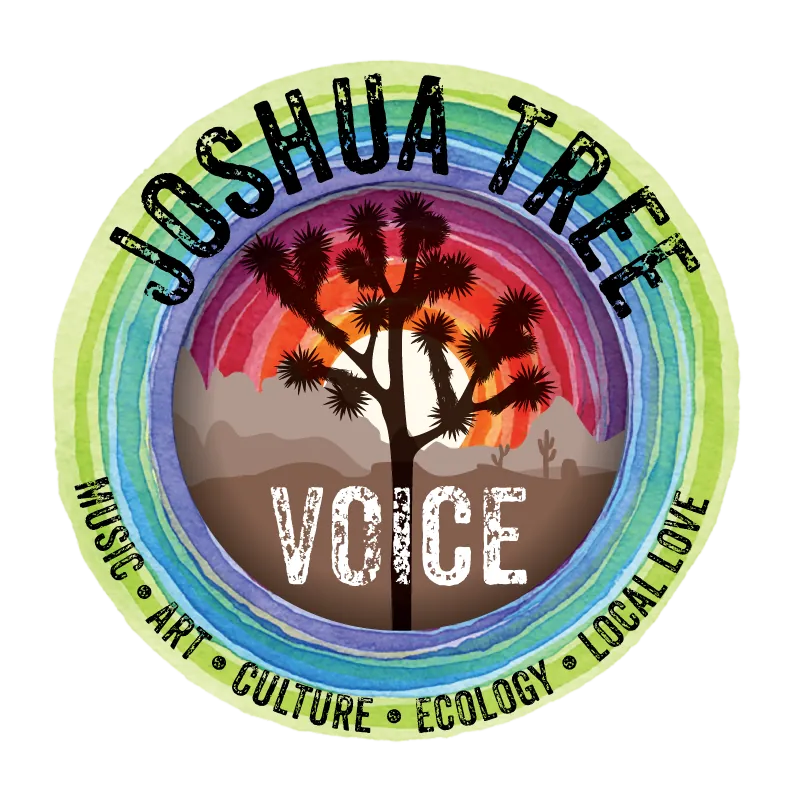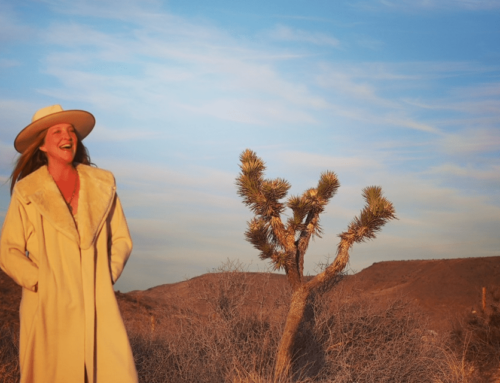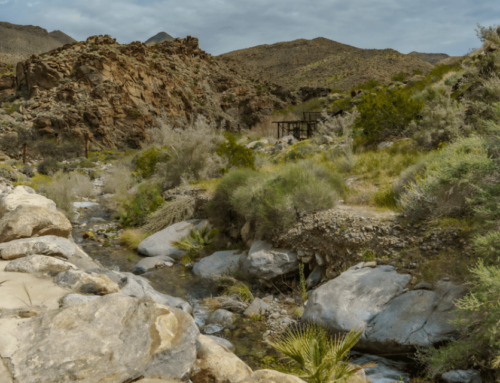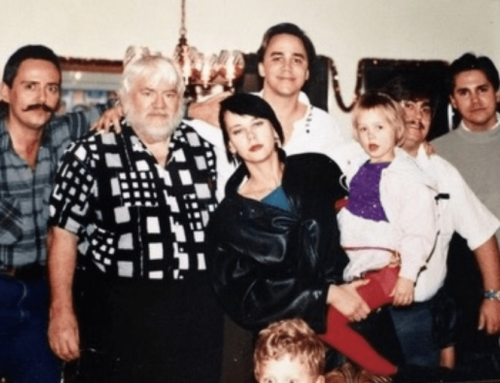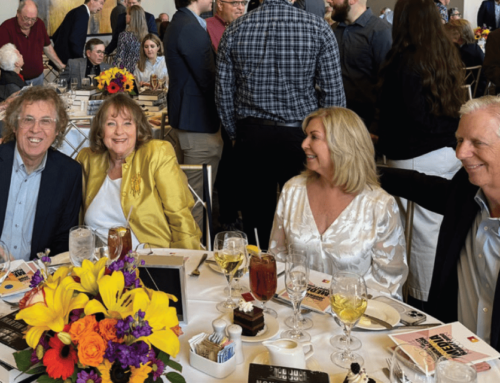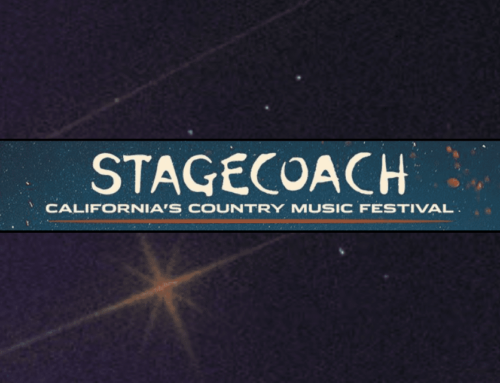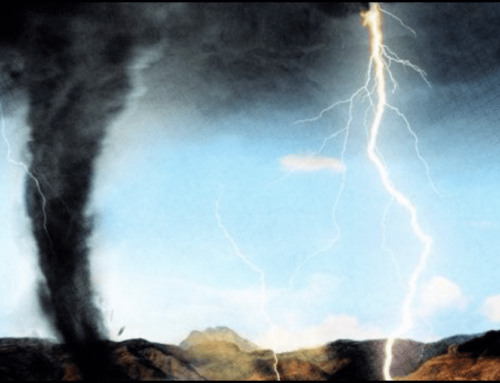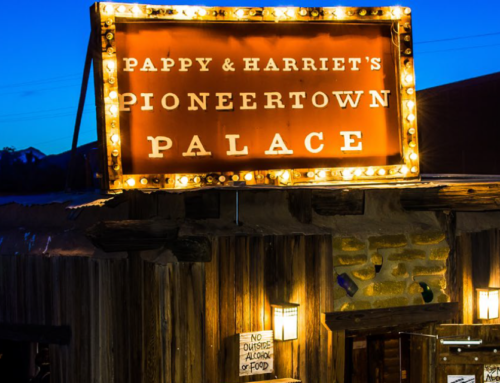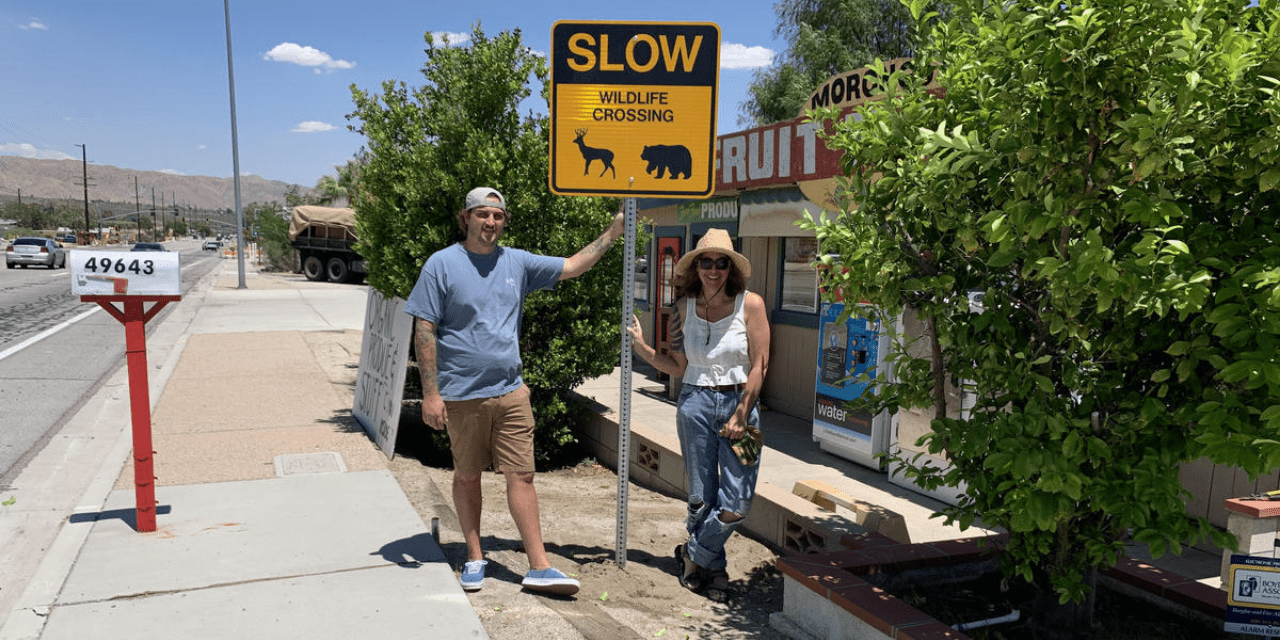
One Woman’s Wild Love for Wildlife
By Jacque Guevara
Nicole Holland, owner of Cactus Mart, is a woman with a mission – and it’s a wild one.
Originally from Michigan, Nicole has been a desert girl since her early childhood. Her grandpa settled in Landers in the 60s in a tiny old home on 5 acres – a true homesteader. Nicole recalls her love of the desert starting then – taking showers outside with a hose, chasing jackrabbits around the property, and playing in abandoned old shacks. A vegetarian, Grandpa taught Nicole all about growing her own food – he was especially fond of his citrus trees – and taught her the meaning of community. Even in those early years, neighbors were important. Grandpa, Nicole, and crew would help neighbors out with their goats and chickens and accept payment in eggs!
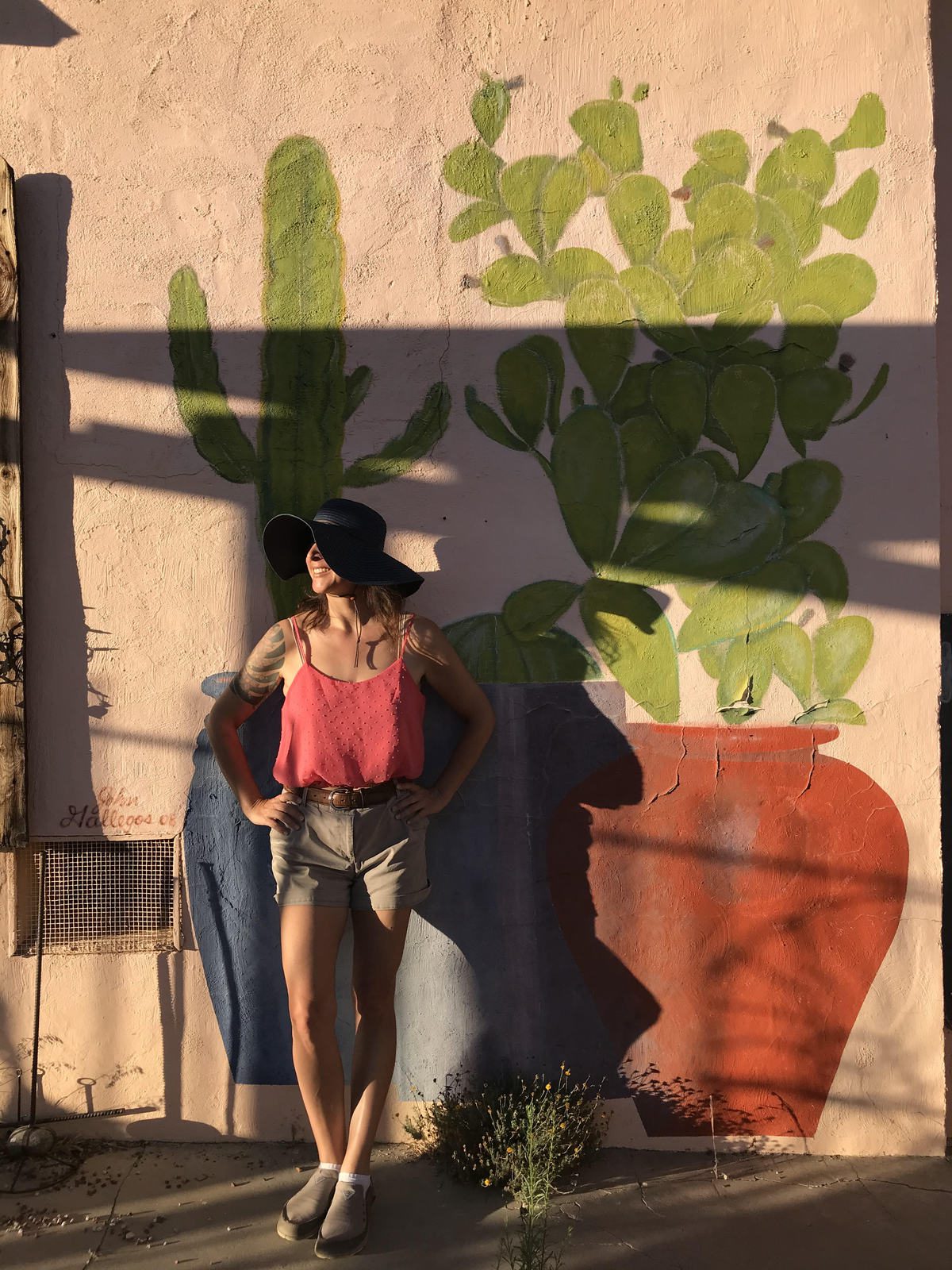
Even after moving to the Coachella Valley as a teen, Nicole maintained her love of plants and “all things desert”. She began her career working for a landscape company and eventually partnered on a new business in Palm Desert called Lotus Gardens. As a small business, Lotus Gardens gave Nicole the chance to specialize in, and to work more with, drought tolerant and native plants. “Understanding the tie between flora and fauna began there, and it was eventually going to be a very important staple of my career,” she says.
Fast forward to 2008, when Nicole and her then-husband decided to move “up the hill” to the Morongo Basin. They decided Morongo Valley worked best for them; they appreciated the proximity to the “low” desert and loved being in their own little bubble and having their “own” preserve, Big Morongo Canyon. Nicole continued working in the low desert, but soon put down some deep roots in her new home. She remembers, “When I heard Cactus Mart was selling in 2012, I was immediately drawn to it. It’s all I could think about. Cactus Mart was a staple since the 1970s with its dig-your-own cactus, fun unique gifts, and local art, like the fabulous wildlife photography of David McChesney.” It was a match made in heaven.
What she quickly found out in her new business, was that Morongo Valley was also home to a wide variety of wildlife – quite literally on a local level. She shares, “Bobcats have come into our store, deer come up our backstreet, and bears are right in front of our storefront in summer mornings.” Unbeknownst to most folks other than the locals, Big Morongo Canyon and the surrounding areas are home to annual bird migration and several wildlife corridors.
Wait, what’s a wildlife corridor? Oxford Languages Dictionary defines a wildlife corridor as “a strip of natural habitat connecting populations of wildlife otherwise separated by cultivated land, roads, etc.” Separated by roads is right. In Morongo Valley, the proverbial river doesn’t run through it – Highway 62 does. As a manner of fact, Sand to Snow National Monument is neatly dissected by it. This presents a huge problem for wildlife crossing the highway in search of water and trying to get to Big Morongo Canyon Preserve and back again.

Over the years, Nicole has noticed an influx of people moving to the area, and an increased number of tourists, most of whom have no idea that they are moving through a wildlife corridor as they travel “up the hill” to hike and enjoy Joshua Tree National Park and other desert public lands. The numbers really increased during COVID, as getting away to the desert provided solace and release for thousands of city-dwellers prohibited from their usual recreational pursuits. Unfortunately, a lot of the time people speed up and down the highway through Morongo Valley without even realizing the negative impact they may have on the area they have come to enjoy.
As Nicole puts it, “Our wildlife is paying the price. Especially with last summer’s fires and the drought, bobcats, mountain lions, coyotes, bighorn, bears, and deer were all getting hit crossing over the highway.” According to her, a collective of locals started leaving out watering, stations to try to mitigate the number of animals crossing the highway to get to the preserve, but it wasn’t enough. Sadly, many were struck and killed on Highway 62 during the summer of 2021. That’s when she and some of her friends got together to take it a step further.
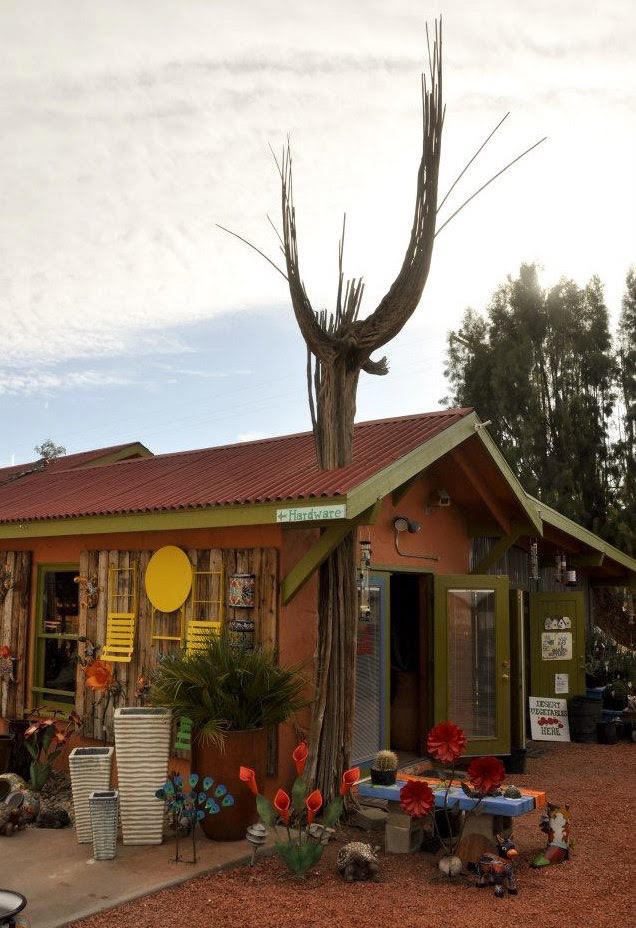
They decided to pitch in and install wildlife crossing signs on their own properties to an attempt to bring some awareness to the issue. And for a time, it worked. People seemed to slow down and become more aware of their driving and the wildlife. Questions flooded in on social media asking about wildlife and where people could get the signs for their own areas – even from as far east as Wonder Valley. Big Morongo Canyon Preserve got in on the action and are still working with Nicole and company to erect larger billboards on their property coming up the grade from the Coachella Valley.
Unfortunately, and despite the collective’s best efforts, wildlife is still being struck and killed on Highway 62. When I interviewed Nicole for this story, she shared that she and some residents had just removed a dead bear cub from the side of the road up the street from her store. It was simultaneously saddening and infuriating, impacting her deeply.
Conservati on legend and resident naturalist at the 29 Palms Inn, Pat Flanagan, shared that the attention being generated by Nicole and group is part of a larger and smaller – story. Much work has been done on studying and preserving wildlife corridors throughout the Mojave Desert and surrounding regions for decades, work Pat and others in the conservation community have been an integral part of completing. And though the big critters like the bears and deer are most definitely negatively impacted by the heavier traffic in the area, she cautions us not to forget about their smaller counterparts – the rabbits and other small
rodents, the lizards and snakes, the birds, and even the insects. “There are certainly many daily deaths of the smaller desert creatures that go completely unnoticed.”
Though positive changes have been made on this local issue, there is more work to be done. Nicole plans to keep educating people about which wildlife is found in Morongo Valley. Others in the group have contacted Caltrans and advocated to reduce the speed limits through the main stretch in town. The process has been started to effect this change, and though the speed can only be lowered 5 miles per hour, Nicole says she is still happy with any progress that can be made in that area. “Hopefully if we just keep the awareness factor going and can lower the speed limit a little bit, people will slow down and realize what they are actually driving through is not some sleepy little town, it’s a wildlife corridor.”
Want to help? Here are some steps to follow –
1. Educate yourself about the wildlife corridors and wildlife in the Morongo Basin
2. Share this messaging with 5 friends, and ask them to share with 5 friends as well
3. Support Nicole and her neighbors in their work
4. SLOW DOWN while driving on Highway 62 (and all desert roads) and watch out for the wildlife!
To learn more about wildlife corridors in the Morongo Basin, follow this link to the Morongo Basin Conservation Priorities Report on the Morongo Basin Conservation Association website.
To learn more about Nicole Holland and her crew at Cactus Mart, follow this link to their website.
Photo Cred: Nicole Holland
